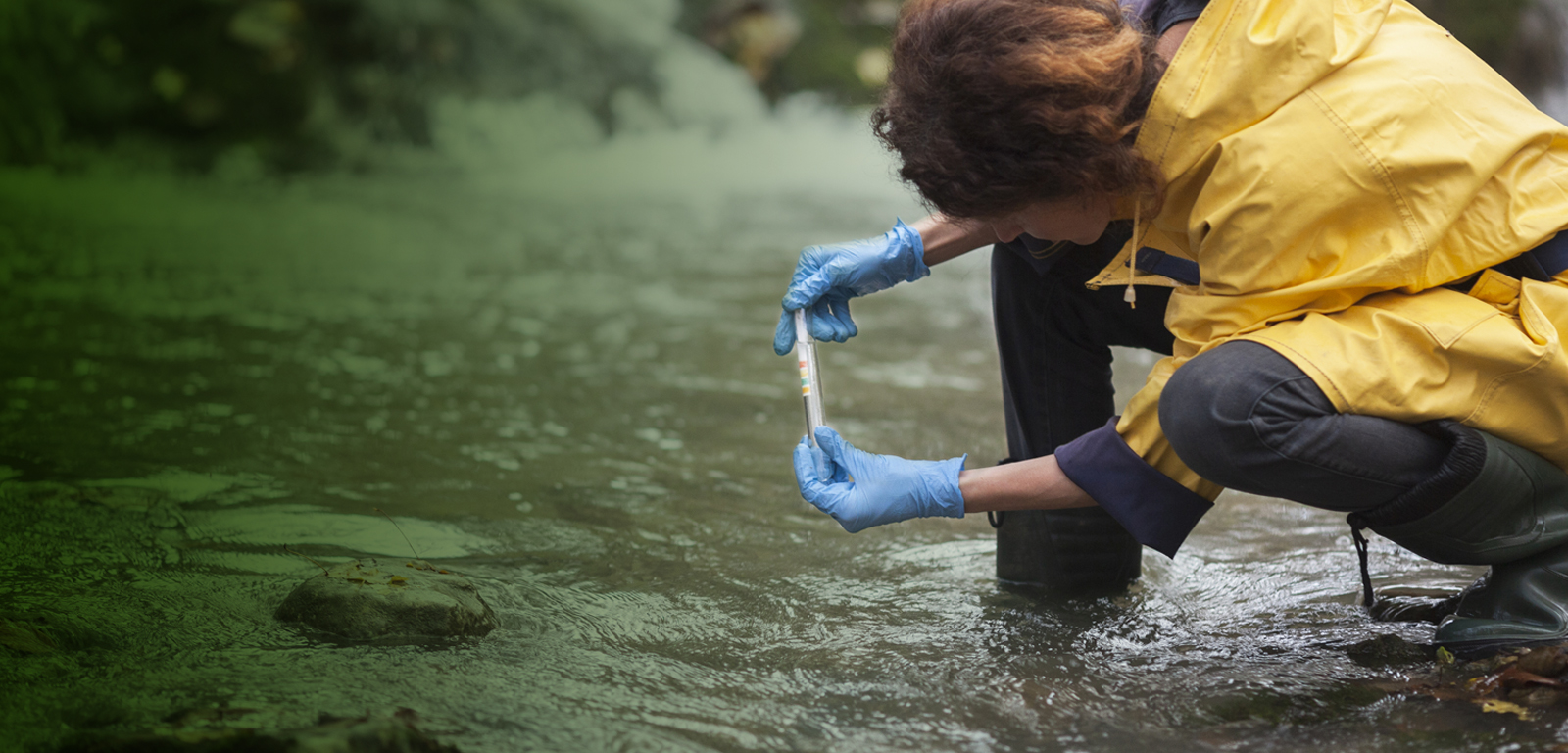Subject
Metrology of Aquatic Environments
General details of the subject
- Mode
- Face-to-face degree course
- Language
- English
Description and contextualization of the subject
Determining water quality is a key question and legislation aims at achieving an ecological and chemical ¿good status¿ of all water bodies. In this module, we focus on superficial water bodies (e.g.: rivers, lakes, estuaries, coastal waters) and the way to assess the status of their physico-chemical status by means of measures, sampling and laboratory analysis.Field operations are located in the coastal lagoon of Vieux Boucau (SW France). Students are in charge of the monitoring design, the hydrological monitoring and laboratory activities.
Aims
¿ The aim of this course is to provide students with a largely comprehensive introduction to aquatic system monitoring by using a wide range of field equipment and lab analyses to investigate the physics and geochemistry f surficial waters.
Objectives
At the end of the Unit, students should be able:
1. to know the basis for defining water quality
2. to set up a sampling strategy (types of pollutants, station location, sampling frequency, sampling apparatus)
3. to perform basic laboratory activities (concentration measurements), control the quality of the data and process data treatment
4. to understand and interpret a water analysis
5. to use databases (multi-variables data), statistical analysis and trend determinations to present, interpret and evaluate results in appropriate forms.
Teaching staff
| Name | Institution | Category | Doctor | Teaching profile | Area | |
|---|---|---|---|---|---|---|
| ORTIZ ZARRAGOITIA, MAREN | University of the Basque Country | Profesorado Agregado | Doctor | Bilingual | Cellular Biology | maren.ortiz@ehu.eus |
Competencies
| Name | Weight |
|---|---|
| Que el estudiante sepa y entienda los conceptos teóricos en torno a los Programas de seguimiento ambientales de los niveles y efectos de los contaminantes químicos ambientales, así como los aspectos prácticos y sus aplicaciones. | 16.0 % |
| Que el estudiante sepa y entienda los conceptos, práctica y aplicaciones de los análisis químicos en matrices de interés ambiental. | 16.0 % |
| Que el estudiante sea capaz de diseñar y elaborar modelos numéricos, estadísticos y computacionales en lo referente a los ciclos biogeoquímicos de los contaminantes químicos ambientales, sus efectos sobre los seres vivos y los procedimientos de evaluación de riesgo e impacto. | 16.0 % |
| Que el estudiante posea habilidades en el procesamiento y análisis de datos de contaminación y toxicidad y experiencia investigadora obtenida mediante un proyecto individual de investigación avanzada. | 16.0 % |
| Que el estudiante muestre destreza en la evaluación de la contaminación, de la calidad ambiental y de la salud de los ecosistemas, tanto desde el punto de vista académico como práctico. | 16.0 % |
| Que el estudiante sea capaz de recolectar, registrar y analizar (tratamiento y computerización) datos sobre contaminación y toxicidad (de campo y de laboratorio) mediante técnicas y equipamiento de última generación. | 16.0 % |
Study types
| Type | Face-to-face hours | Non face-to-face hours | Total hours |
|---|---|---|---|
| Lecture-based | 30 | 45 | 75 |
| Applied classroom-based groups | 6 | 9 | 15 |
| Applied fieldwork groups | 24 | 36 | 60 |
Training activities
| Name | Hours | Percentage of classroom teaching |
|---|---|---|
| Laboratory/Field | 60.0 | 40 % |
| Lectures | 75.0 | 40 % |
| Seminars and tutorials, laboratory sessions, etc. conducted with the project manager | 15.0 | 40 % |
Assessment systems
| Name | Minimum weighting | Maximum weighting |
|---|---|---|
| Internship Report/Summary | 50.0 % | 50.0 % |
| Written examination (theory) | 50.0 % | 50.0 % |
Learning outcomes of the subject
At the end of this Unit, students should understand:1. the sampling strategy to encompass spatial and temporal variations
2. the major parameters used to define water quality and measurement methods
3. analytical methods to quantify nutrients and particulate matter parameters
Temary
Topics covered include:Sample preparation: sampling, preservation, preparation, extraction, analysis
Expression of results: studied parameters, units, presentation of results, precision and accuracy
Chemical substances and pollution criteria
Major physicochemical characteristics (T, salinity, dissolved oxygen, pH, turbidity), measurement methods
Particulate material (organic SPM, C, N, P, chlorophyll pigments), measurement methods
Nutrients (nitrite, nitrate, ammonia, phosphate, silicate), measurement methods
Application of analytical methods to environmental samples
Bibliography
Basic bibliography
Fundamentals of Environmental Sampling and Analysis, by Chunlong ZhangWater Quality: An Introduction , by Claude E. Boyd


